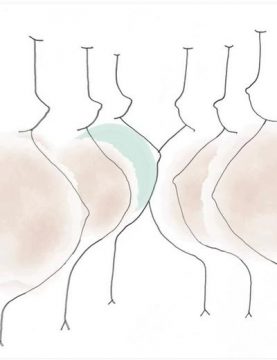DOCTORAL THESIS. Preterm delivery is the leading cause of death in children under the age of five. Tove Wikström’s research focuses on methods to identify women with an increased risk of preterm delivery, in order to find ways to prevent it in the future.
When delivery occurs before 37 weeks of gestation, it is defined as preterm. This is the single most important cause of death in children under the age of five.

Dissertation Defense: December 1, 2023 (click for details)
Doctoral Thesis: Ultrasound and molecular biomarkers for prediction of preterm delivery in different risk groups of singleton pregnancies
Research Area: Obstetrics and Gynecology
Sahlgrenska Academy, The Institute of Clinical Sciences
“The problem is that we know too little about the underlying mechanisms as to why some women give birth preterm and others not. This makes it difficult both to identify those at increased risk of giving birth preterm and to find methods to prevent it,” says Tove Wikström, obstetrician at Sahlgrenska University Hospital in Gothenburg.
Trying to find new biomarkers
Earlier studies have shown that preterm birth can be partially prevented in singleton pregnancies. This is done by using vaginal ultrasound to identify women who have a short cervical length followed by treatment with vaginal progesterone to those at risk.
“The main aim of this thesis is to investigate whether cervical length screening followed by vaginal progesterone treatment could be cost-effective in a Swedish context, and to investigate whether there are differences in human and microbial gene expression in vaginal secretions and differences in serum miRNA levels early in pregnancy in those who give birth prematurely. The aim of this is to better understand the underlying mechanisms of preterm delivery and to find new biomarkers to improve the diagnostics.”
Screening can be cost-effective
![]() What are the most important research results and what benefits can they provide?
What are the most important research results and what benefits can they provide?
“The most important findings in the thesis are that measurement of cervical length with vaginal ultrasound can be used in a Swedish population to identify women with an increased risk of preterm delivery, in both high- and low-risk pregnancies. And that screening of cervical length followed by treatment with vaginal progesterone to those with a short cervical length would most probably be cost-effective in a Swedish setting,” says Tove Wikström and continues:
“We have also found differences in human gene expression (mRNA) in vaginal samples and in miRNA expression in blood samples in those who give birth preterm. However, whether these mRNAs and miRNAs could be used as biomarkers for preterm birth in the future remains to be seen.”

“Like solving a mystery”
![]() What made you choose this particular focus for your thesis?
What made you choose this particular focus for your thesis?
“Preterm birth and its complications are a big part of our clinical everyday life as obstetricians. It feels very meaningful to conduct research that in the long run could potentially lead to fewer preterm deliveries with the goal of improving life of both the children and their families.”
![]() What has been fun and rewarding about the PhD project?
What has been fun and rewarding about the PhD project?
“It’s fun to be part of a group that drives a project forward together. It’s a bit like solving a mystery together. By collecting clues and trying to figure out their meaning, you hopefully get a little closer to the answer.”
BY: JAKOB LUNDBERG
This article was first published on the website of the Institute of Clinical Sciences.











